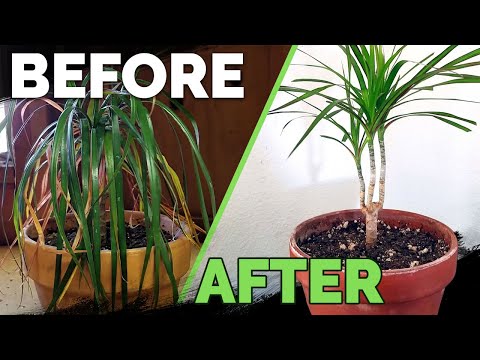The decision of whether or not to repot your houseplant from its original plastic pot can be confusing. It’s tempting to look to the internet for easy answers and a rule of thumb, giving you a specific time frame to complete the task.
However, similar to how houseplants are not watered at specific intervals—and should instead receive water as needed—there is no set time for how long your new pothos or fern should stay in its nursery pot.
If it looks happy, there’s a good chance you can leave it alone for a year, or maybe even much more. On the other hand, if you’ve got a cactus in a plastic pot with muddy soil and rocks glued on top—you must take emergency measures.
There’s a lot to consider when making your decision. We’ll walk you through the thought process, so you can keep your houseplants happy and healthy for years to come, possibly in their original plastic pots.
The Short Answer
How long can you leave houseplants in their original plastic pots? It really depends, and there is no short answer. There are many factors that determine how long a houseplant will continue to grow and thrive in its plastic pot, and while some plants could benefit from repotting ASAP, others may be alright for multiple growing seasons—maybe even years.
The Long Answer
Normally, when determining whether to repot a healthy houseplant that you’ve been growing for some time, there are a few major factors that you evaluate:
- Has the plant outgrown its current pot, as evidenced by roots growing out of the drainage holes or above the soil line?
- Could it benefit from a different type of pot, e.g., clay, ceramic, or plastic, providing more air flow to the roots or a heavier base for a top-heavy plant?
- Is the substrate particularly old, compacted, devoid of nutrients, and possibly even decaying, depending on the medium?
Nurseries, big box stores, and garden centers typically sell houseplants in plastic pots, often referred to as “nursery pots.” If you’ve recently purchased a plant or received one as a gift, there is even more to consider than the points above.
Soil is Key
More important than the actual nursery pots is the soil or potting mix in which the houseplant is growing. A thorough assessment of the quality and whether it matches the needs of the plant in question is the chief concern when deciding whether and when to repot a new plant still in its original pot.
Anyone who’s explored both the houseplant selection of a boutique nursery and a big box hardware store can tell you: not all nursery pots (and the soil within them) are created equal. While a specialty shop may nestle a cactus into a plastic pot with a well-draining mix, a hardware store may stuff it in a plastic pot with all-purpose potting mix—and glue rocks on top for aesthetic purposes.
So, from the get-go, it’s important to recognize that not all nursery pot and soil combinations are the same, so there can be no exact rule on how long you can leave plants growing within them. Instead of going off a rule-of-thumb timeframe, instead, research the plant’s needs, inspect its current set-up, evaluate its health, and then make your decision.
Research Care Needs
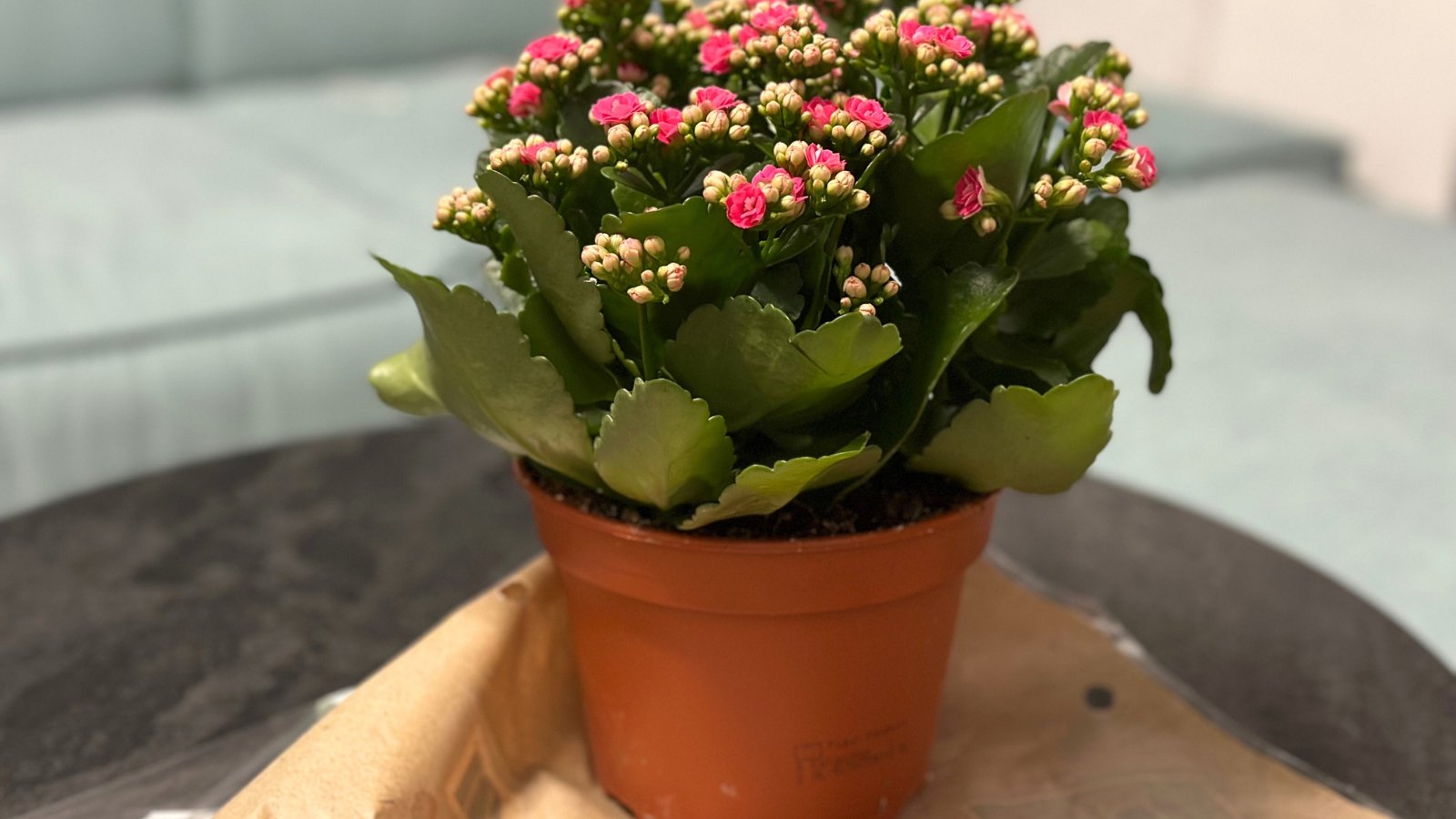
Knowing what your new plant needs is foundational in determining how long it can stay in its nursery pot. If you’re not familiar with its soil preferences, you’ll have no idea if it can continue to grow in its current container or if you should remove it sooner rather than later.
If you aren’t already familiar, do a little bit of research about your plant. Many popular houseplants prefer or require well-draining soil. This is the case not only for traditional cacti and succulents but also for snake plants, ZZ plants, and more.
“Well-draining” soil allows excess water to quickly drain through, and it dries out fairly quickly. The soil must be able to dry out completely before you water again. Standard all-purpose potting mix does not drain and dry out fast enough in many instances. A standard cacti and succulent mix, however, typically will be sufficient.
Many tropical species will be happy with a general all-purpose mix, like pothos vines. Lastly, there are some popular options, including orchids and carnivorous plants, that have totally unique requirements. You’ll need to have these preferences in mind when you get to the next step.
Inspect the Current Set-Up
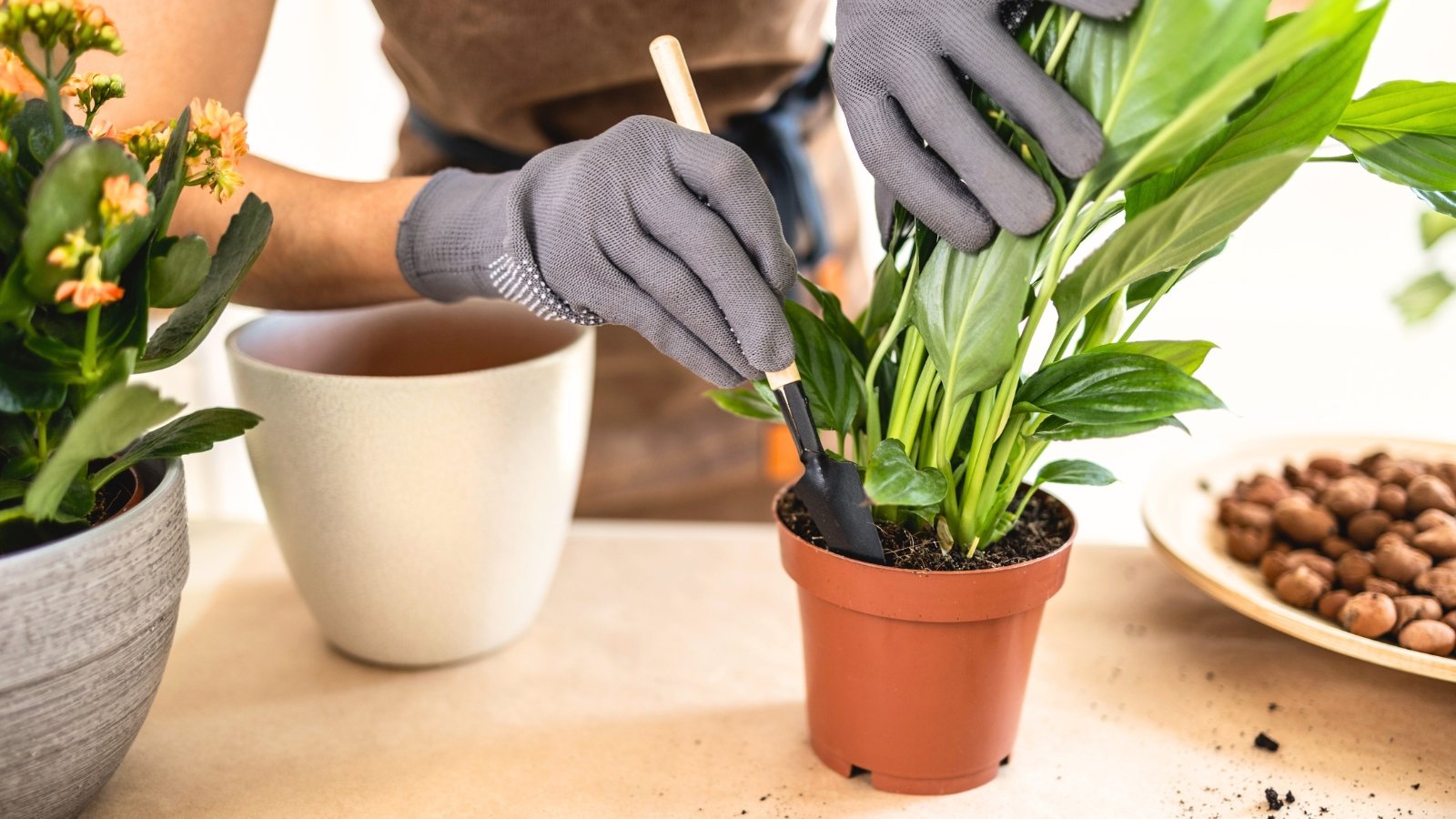
More often than not, it seems like retailers pair original plastic pots with wet, moisture-retaining soil, which is rarely the right choice for popular houseplants. It’s certainly the wrong choice for cacti and succulents—which prefer sandy, well-draining soil—and orchids and other epiphytes—which don’t really grow in soil at all and therefore need chunky media mixes.
If you purchase an Aloe vera, similar succulent, or snake plant and find it in a wet potting mix, then you should probably repot it as soon as possible. If you take home an orchid that it’s in an arrangement with potting mix and houseplants with different watering requirements, you’ll want to remove it right away.
That said, there are a few common species that might not mind a heavier mix. Peace lilies and ferns prefer soil that never really fully dries out, so depending on the quality of the potting mix, they might actually be okay.
What about tropical houseplants that fall somewhere in between? Pothos plants and Philodendron species don’t exactly need a cactus mix, but they don’t want to sit in constantly moist soil, either. For these favorites, you’ll have to make a judgment call. If the soil is damp but water can run through, it may be alright. If it’s actively wet and puddling, then it doesn’t drain well enough.
Finally, don’t forget to look for a drainage hole. Nursery pots almost always have drainage holes, but if you find one without a way for excess water to drain through, then it’s simply no good. You should repot the plant at your earliest convenience.
Evaluate Health
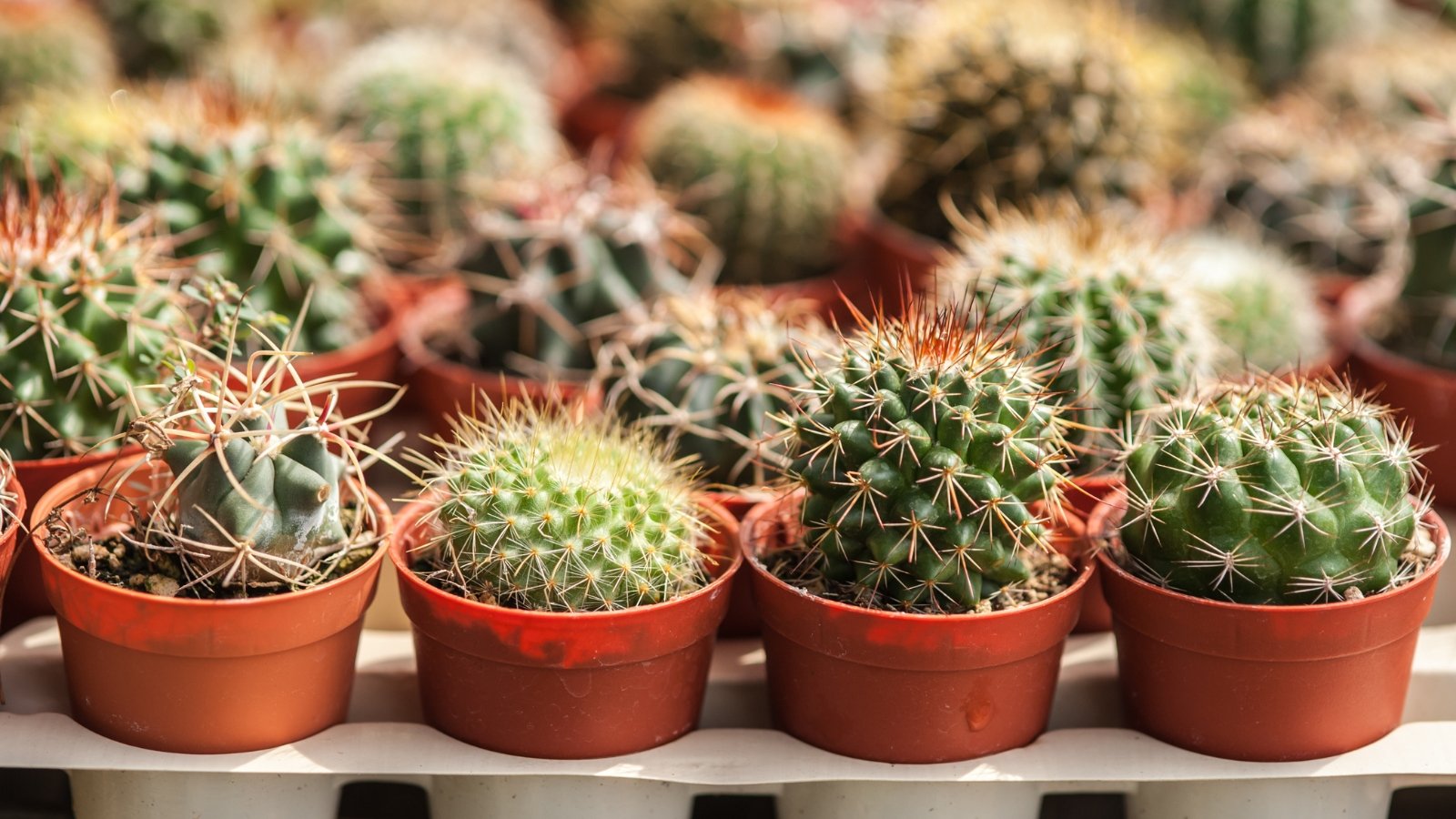
Next, consider the plant’s health. If the soil seems okay to you based on your research, and the plant looks healthy, putting on new growth, possibly blooming, and generally looking cheery—perhaps the current vessel is satisfactory.
Note that sometimes houseplants will continue to look stellar for quite a while even in sub-par conditions, so a good-looking specimen is not always a guarantee that it’s happy in its plastic pot. If a cactus looks lovely but is currently sitting in a heavy potting mix, then you might’ve just caught it before visible symptoms of rot.
On the other hand, a visibly unhealthy plant is cause for concern right away. There are many reasons why it may be struggling that are unrelated to its plastic pot, including pests, disease, and incorrect environment conditions at its previous location, but there are also multiple situations that repotting can solve.
If the houseplant is wilting, for example, and you can see that there are tons of roots poking out of the soil, then it’s ready for a repot. It’s outgrown its old container. On the other hand, if a peace lily keeps drooping within days of you watering it, then it’s probably in soil that doesn’t retain enough moisture. Time to repot it.
Make Your Decision

So now, with all of this information in mind, you can decide whether your plant is happy in its plastic pot and how long you might leave it as-is. There are many instances where houseplants can stay in their plastic pots for years, and there are also scenarios in which you need to make a change as soon as you can.
If you have a healthy specimen that’s flourishing in its plastic pot, there is no reason to put a timer on things. You don’t have to repot it into something new, until the plant outgrows it. In fact, moving a healthy plant into a new container or moving it often can lead to transplant shock. Don’t trick yourself into thinking the nursery pot is bad, if it’s not.
Common Low-Maintenance Species
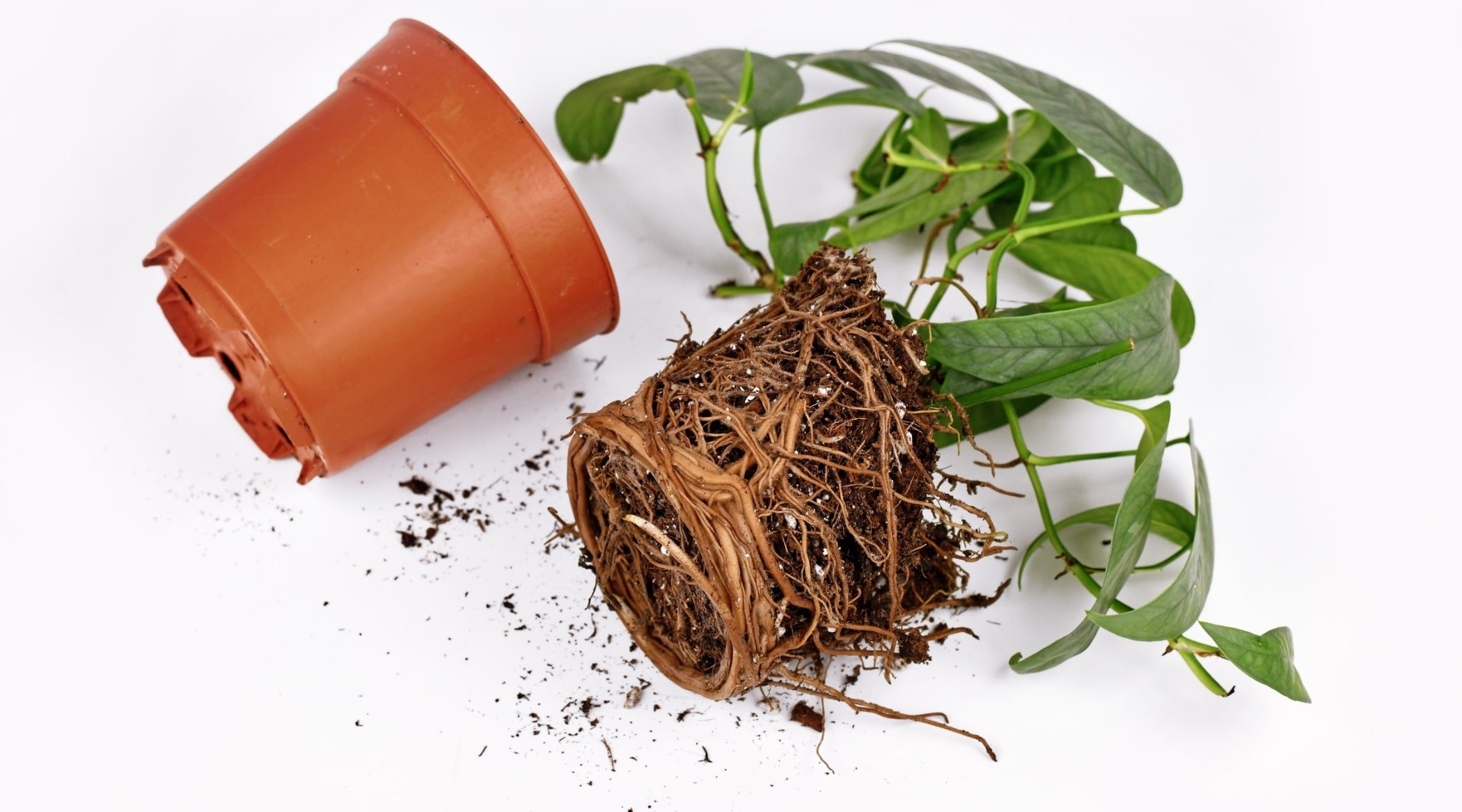
Plants that are most likely to stay healthy in original plastic vessels for a long time are usually easy-going, low-maintenance plants, like golden pothos, Philodendron ‘Brasil’, and peace lilies. If you have no reason to believe these species are struggling and nor do you think they need more space, just leave them alone.
Cacti and Succulents
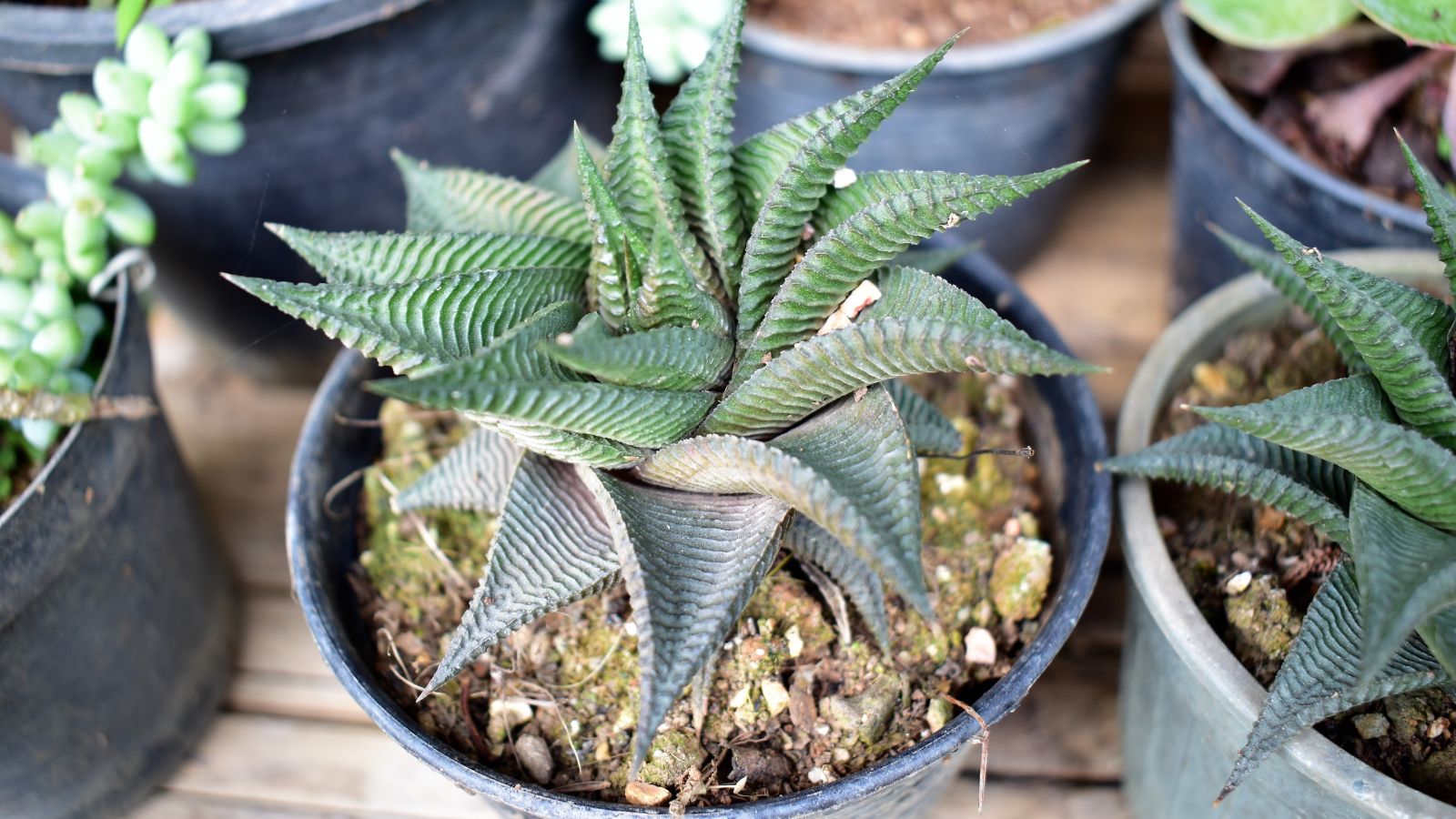
Common indoor plants that are most likely to need repotting sometime soon are cacti, succulents, houseplants in arrangements, and orchids. Cacti and succulents not only need well-draining soil, but also, they should truthfully be in terracotta or another “breathing” material, like clay, further increasing air circulation.
While houseplant arrangements can be beautiful and make fun gifts, they’re often doomed from the start. A snake plant, orchid, and fern have extremely different needs, and if they’re all planted together in the same mix and same pot, there’s no way they will all survive. You should remove, separate, and repot them into appropriate media.
Orchids and Carnivorous Plants
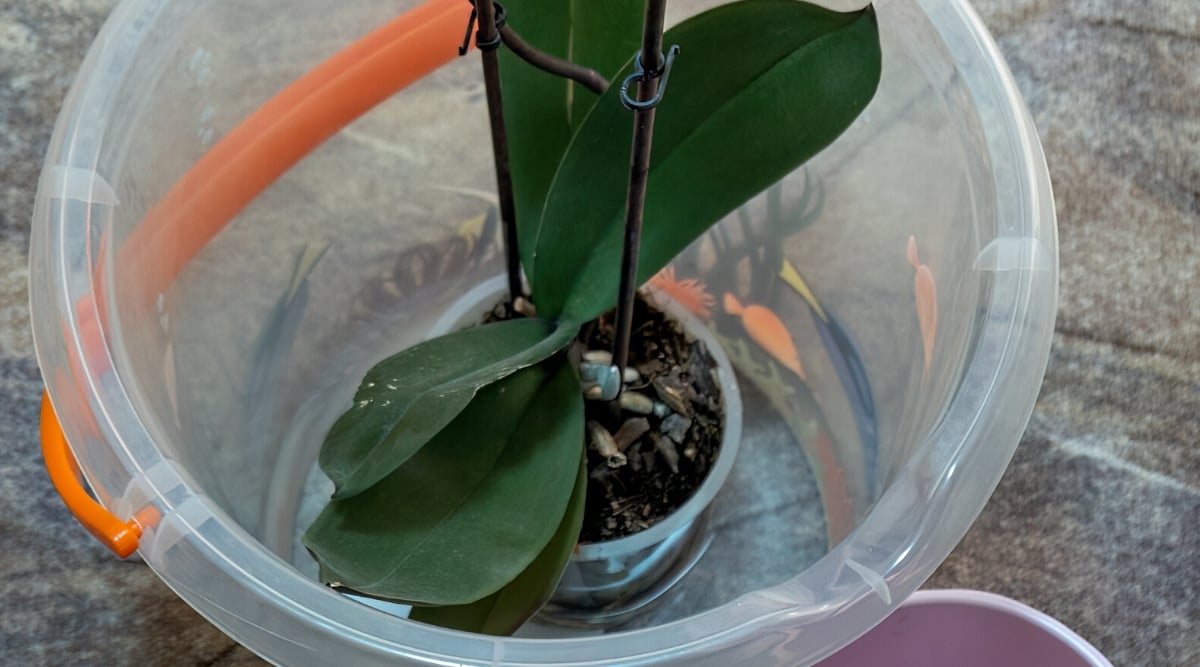
Lastly, orchids and carnivorous plants can be tricky. Big box stores often have orchids in the wrong media. Though it depends on the species, many orchids (including Phalaenopsis orchids), grow best in a very chunky orchid mix and in a pot with large slits for air on the sides.
While your new orchid is blooming, there’s no need to disturb it, but it’s in the wrong medium and in a pot without air slits, water with extreme caution. Repot it after it has finished blooming. That said, many nurseries do a great job setting up orchids in the right medium. It depends.
Carnivorous plants are becoming more and more popular in the houseplant trade, especially the classic venus flytrap, which is often available at hardware stores and supermarkets. This species is known for its ability to “eat” bugs, which is where it gets its nutrients. These plants are not efficient at taking up nutrients from soil, so fertilizer-dense all-purpose potting mix can actually hurt them.
If you have a venus flytrap, pitcher plant, or similar carnivorous species and it’s living in its original plastic pot in an all-purpose mix, you may want to repot it sooner rather than later. While the container itself is okay, the soil is not. Repot it in a mix of sphagnum moss and perlite.
Final Thoughts
In summary, you can leave houseplants in their original plastic pots for as long as the plants remain in good health, and whether they continue to thrive is based not so much on the pot but more so on the soil. Sometimes, changes need to be made right away.
Instead of relying on a determined rule like “wait at least one year,” instead do a little research about the plant, evaluate its current set-up and condition, and then decide whether or not to leave it alone or make the transition into a new vessel.

